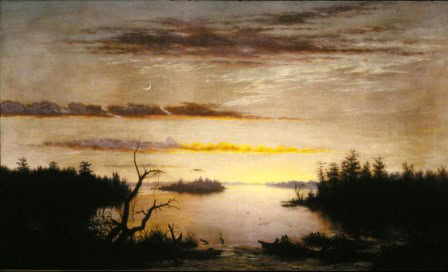
Fugitives Hiding in Plain Sight: Reflections on Flavius Fisher’s Dismal Swamp
February 22, 2026 @ 2:00 pm - 3:30 pm

Image Credit: Flavius J. Fisher, Dismal Swamp, ca. 1858, oil on canvas
Gift of Mrs. Robert N. Winfree, 1976
At a time when draconian enforcement of the federal Fugitive Slave Act was dramatically escalating sectional tensions, viewers of Virginia artist Flavius Fisher’s Dismal Swamp (c. 1858) knew they were seeing much more than a mere landscape painting. They knew the Great Dismal Swamp was both a site of commercial exploitation and a notorious refuge for escapees from slavery. Some fugitives were maroons living deep in the swamp’s forbidding interior; others lived in its periphery, openly hired by employers who asked few questions and benefited from highly motivated people who worked hard for low pay.
The 1850s were a time of crisis for such refugees, and for their counterparts hiding in plain sight in many Southern cities. Government crackdowns on fugitives meant that their places of refuge were growing less secure and their daily lives more filled with dread. Art historian Kathleen Placidi and historian John d’Entremont use Fisher’s Dismal Swamp as a launching pad to explore these issues, crucial to the coming of the Civil War and hauntingly relevant to the political crisis of our own time.
FREE and open to the public.